#kibbutzim
Text
The remains of a 12 year old Israeli girl who was burned alive on Oct 7th have been laid to rest by her family.
Hamas terrorists burned Liel Hetzroni with her body so badly destroyed that there wasn’t even a body left to bury.
All that remained was her ash and a few bone fragments.
Her twin brother, Yanai was also burned alive.
Her grandfather was shot as he hid in a safe room on Oct 7th and bled to death.
Today her family held a farewell ceremony for her, laying her ashes to rest in a small cemetery in Kibbutz Revivim in the Negev Desert.
Source: Times of Israel/ The Jewish Chronicle
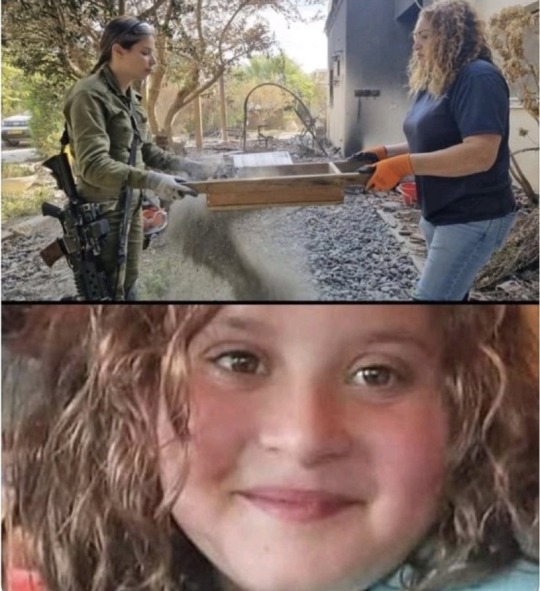
#secular-jew#israel#jewish#judaism#israeli#jerusalem#diaspora#secular jew#secularjew#islam#hamas is isis#Hamas#Gaza#kibbutzim#kibbutz#10 7 23#terrorism#terrorists#genocide
51 notes
·
View notes
Text
At the kibbutz of my girl family friends, lehavot habashan in northern Israel. Lovely Times 🙏🏻

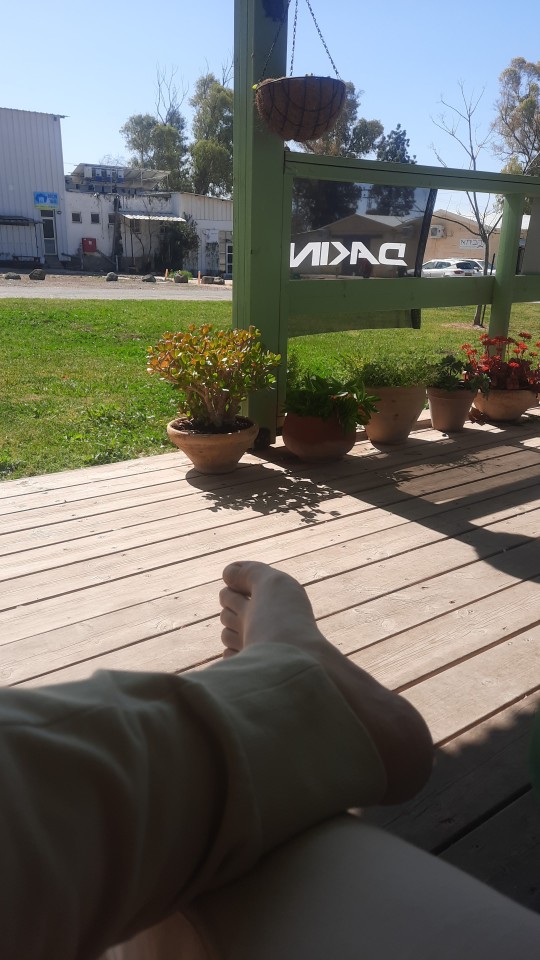
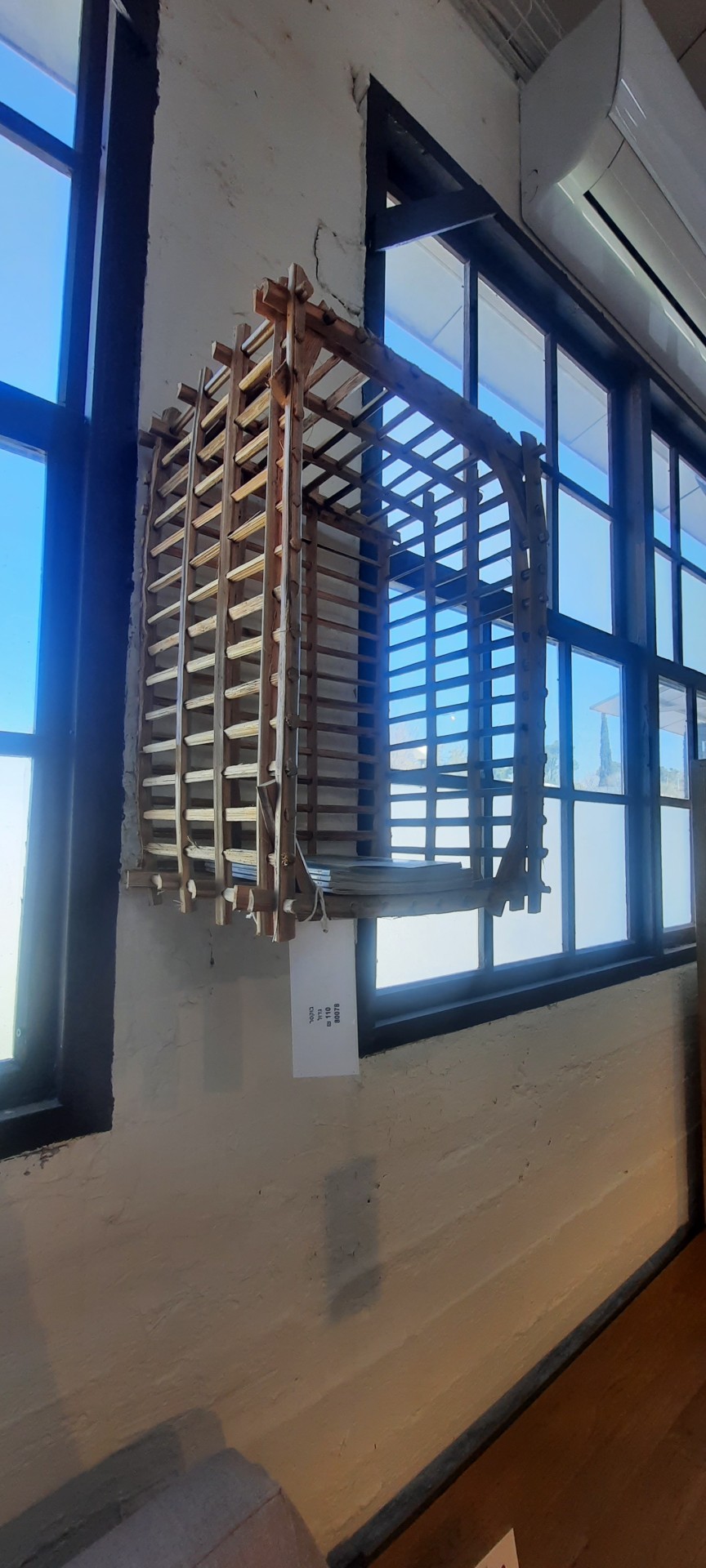
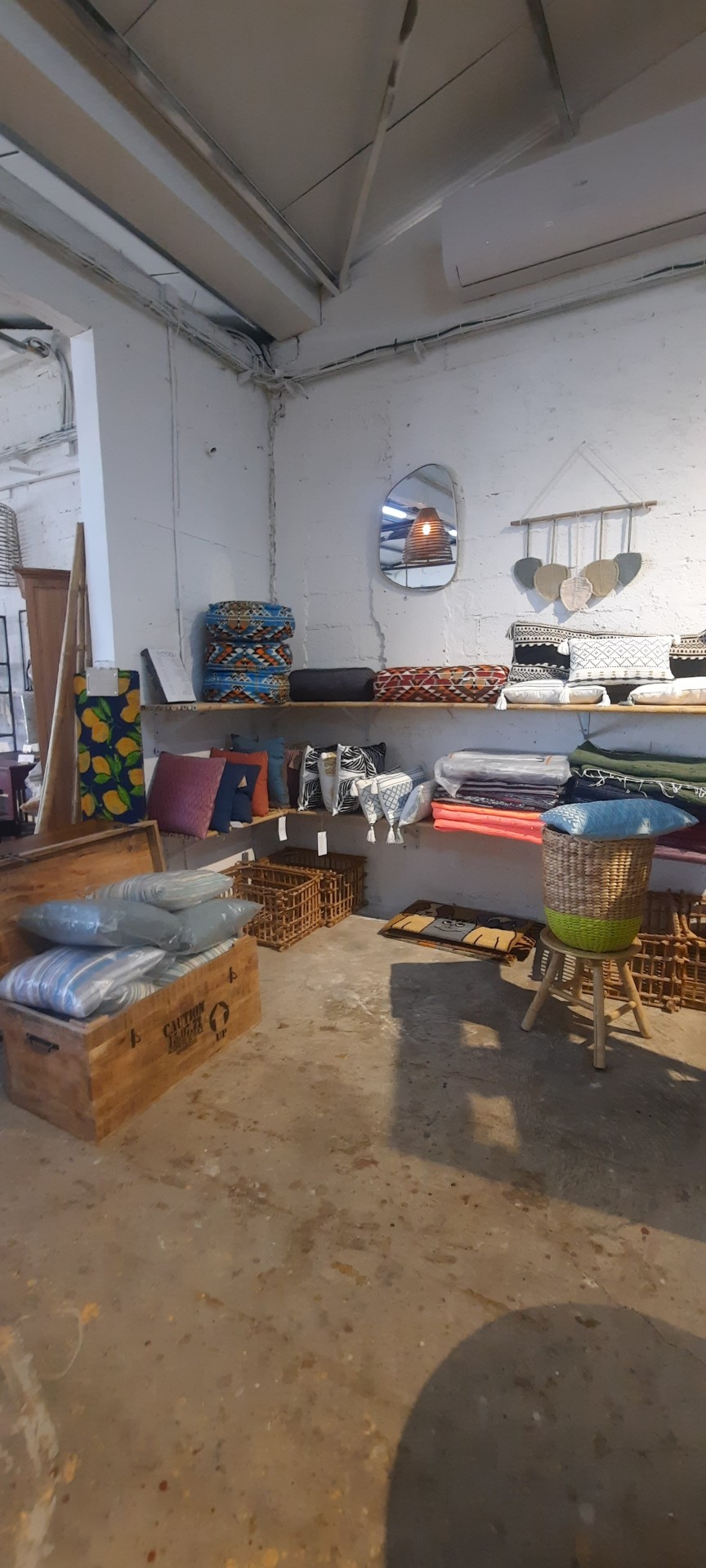


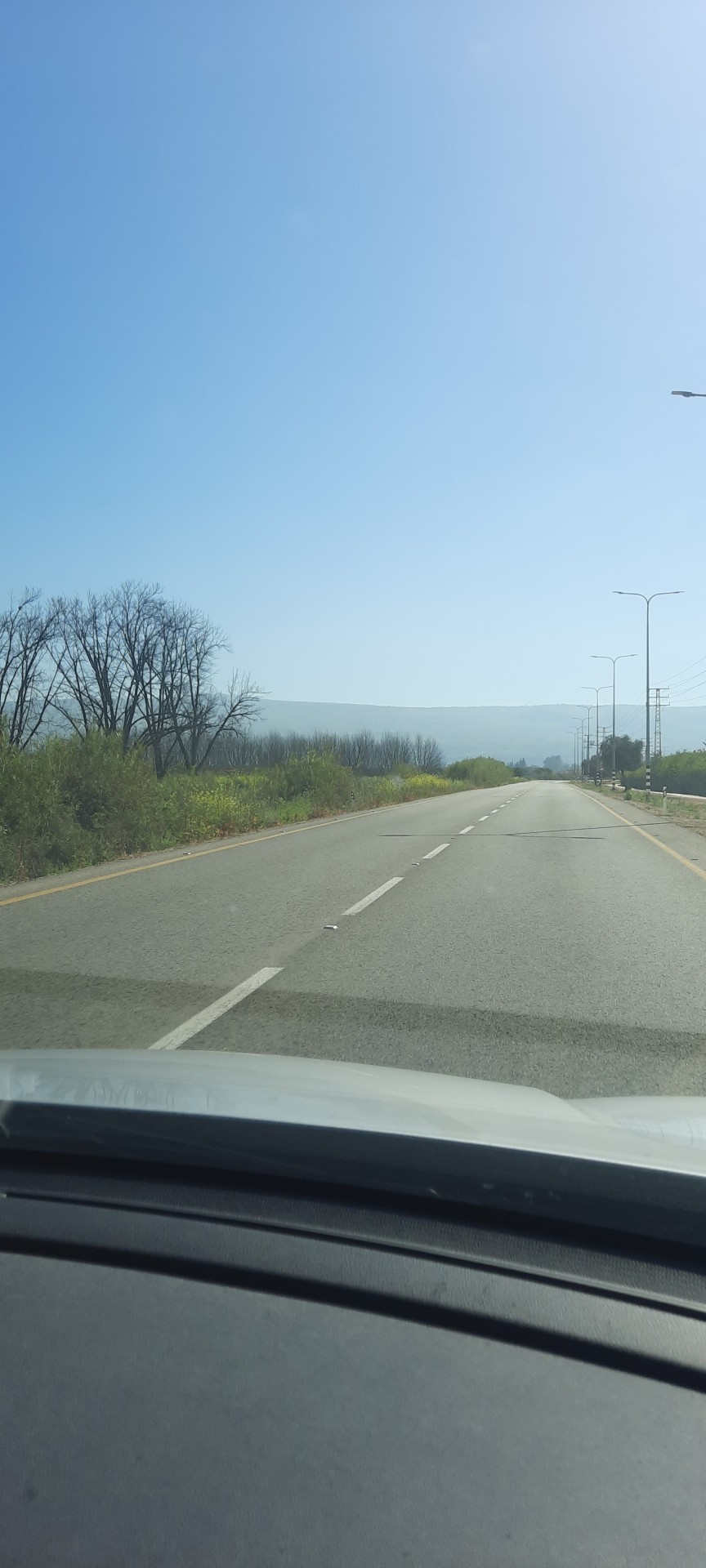
2 notes
·
View notes
Text
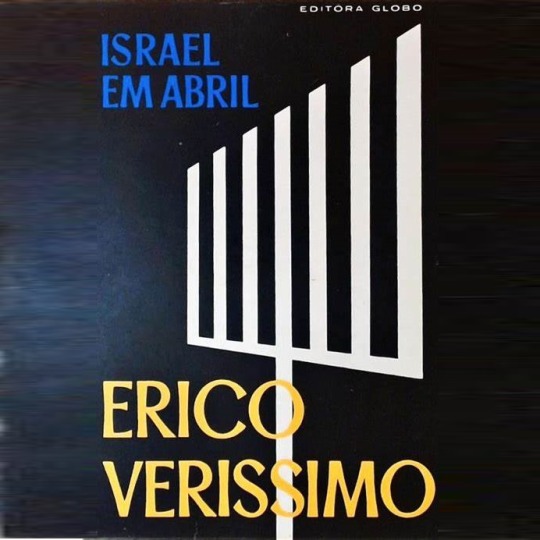
Sugestão literária: Israel em abril - Érico Veríssimo
Último de uma série de quatro livros de viagem escritos por Verissimo. Acompanhado por sua esposa Mafalda, o autor explora diversas cidades, vilarejos, kibbutzim, personalidades, universidades e museus de Israel.
Nesse diário de bordo, Érico Verissimo reflete sobre o que vê e antecipa questões centrais do pós-Israel: o judaísmo deixará de ser apenas uma cultura para se tornar uma civilização? Será que uma eventual decadência do novo Estado sionista afetará a cultura judaica? O autor aposta que não, convencido de que a diáspora judaica nunca deixará de existir.
0 notes
Text
i will never not find it funny that the watermelon began as a symbol of Jewish self determination and Israeli nationhood in the 1940s. every time i see a self important goy comment a bunch of watermelon emojis on a post of a Jewish person existing I think “do they know they are using a symbol of Jewish indigineity and socialist/labor Zionism?”


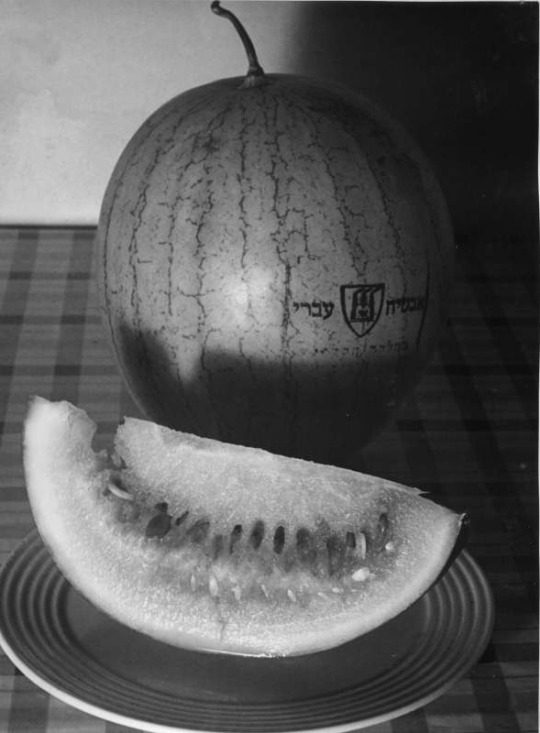
#before statehood was established there was a huge push to buy watermelons and other produce grown on kibbutzim#which was the only autonomous jewish land at the time#just something to think about!#jumblr#judeophobia
798 notes
·
View notes
Text
I urge all "feminists" to read Amit Soussana's testimony in the New York Times. She details the horrors, the torture and the sexual abuse she had suffered in the 55 days she was held, against all international laws, by terrorists in the depths of Gaza.
Amit is one of many hostages who were released after 50 or so days in captivity. She's only one story, the first one to speak publicly with her name and face, about the sexual violence and rape committed by the Palestinian terrorists.
As of 26th of March 2024, there are 134 hostages held in various locations in Gaza. About 100 of them are still alive, still suffering in the hands of Hamas and other terror organizations.
Bring them home now!
#text#feminism#antisemitism#i said i won't publish anything under the feminism tag but this is important#also antisemitism is relevant as fuck since some of y'all refuse to acknowledge it's a key factor#a key factor in the october massacre and a key factor in the refusal to stand with israeli women#like fuck i didn't even mention the many victims of the nova festival who were raped#the bodies in the houses of the kibbutzim which were sexually abused#when will you open your eyes?
14 notes
·
View notes
Text
If you follow me and in any way, shape, or form think the Israeli civilians killed and kidnapped on 07Oct (including children! including old people! including goddamn peace activists working for Palestinian liberation longer than some of us have been alive!) *deserved* what happened by virtue of being Israeli? Do me a favor and unfollow me. This is me showing you the door, please see yourself out, I do not want to have a conversation with you about this. (See tags for caveat.) Because killing of non-combatants is never okay.
It literally does not matter which "side" you are on here. To be clear, I do not agree with being on any "side", this isn't a fucking sports match. These are real people being straight up murdered. Palestinian and Israeli. Both for having the misfortune to be born the wrong country or the wrong religion. That will always be wrong. Hamas is wrong. The Israeli government is wrong. Because killing civilians is always wrong. That's it. That's the takeaway. You don't get to say "Palestinians have a right to self-defense" as a justification for 07Oct. Self-defense does not extend to civilian targets. To non-combatants. To CHILDREN.
And to be quite clear, I will not accept "Israel has a right to self-defense" as a justification for the killing of Palestinian civilians but I'm largely not seeing that from Jewish leftists, including Israelis and including Zionists. I'm largely seeing them call for a ceasefire and for peace and condemn the Israeli government and its actions.
But I *am* seeing fellow western leftists, particularly non-Jews, defend Hamas and the 07Oct attacks in their desire to stand with Palestine. You have to stop doing that. Hamas are not the good guys, you can read their damn charter documents online. You can read analyses of them by experts - Hamas is a religious extremist group intent on imposing jihadist control over the entire region and eliminating all Jews. It's not something they've been secretive about. They routinely kidnap, torture, and kill PALESTINIAN peace activists who they learn have met with Israeli peace activists or in any way worked towards a 2 state solution. They use global aid donated to Gaza for themselves while letting their citizens suffer. Their most prominent leaders don't even live within Gaza, aren't even at severe risk. These are all things you can verify easily and readily just by doing some basic research anywhere that isn't Twitter, tumblr, or Al Jazerra.
So if you want to justify killing civilians? If you want to support a terrorist organization? If you are going to unilaterally condemn all Israelis for the crime of being citizens of a country whose government you disagree with? Please see yourself out. And when you do, please keep in mind that I am a nonzionist telling you to kindly consider availing yourself of the sea. I do not support Israel and I work with actual Palestinian liberation organizations when I can. I've been doing so for the better part of the past 5 years. I attend a synagogue that is actively involved in Palestinian liberation as well as the first nonzionist havurah in the US. I'm not exactly new to this.
But I am also a Jew. I do not support Israel, the government of the nation state, largely because I do not support the concept of nation states as a whole. I find the system inherently violent. But I *do* support, Israel, the people. I am a Jew by Choice. I have chosen to throw my lot in with Israel and her people. They are MY people. If you gleefully call for my people to be slaughtered, I want nothing to do with you.
#caveat that if we're actually friends you are free to reach out for a conversation about this#the no conversations bit applies only to followers#mutuals who are not irl friends i will allow good faith questions but know i will likely be less forgiving than if we were friends#also no content tags for this bc i really don't want it being found#but yeah i'm having a ROUGH time lately with all this#basically every single one of my jewish friends has a family member or friend on a casualty list#or a missing list from 07Oct#and if they don't they know someone who does#i have a friend from that havurah i mentioned who had 2 longtime friends in Israel affected#both were elderly peace activists living on kibbutzim and working for palestinian liberation#one was killed and the other taken hostage#and i just i can't handle the people saying 'everyone deserved it'#really? really???#did *they* deserve it#did the children killed deserve it???#(i have a dead sister if you tell me anyone ever deserves their child to die i will personally fight you)#oh and did the bedouins who were also at the music festival and also killed deserve it?#bc ya know hamas didn't just kill israeli jews that day#they also killed bedounis (who are generally considered palestinian)#bc hamas is an extremist terrorist group and that's what they do
12 notes
·
View notes
Text
absolutely awful take

Let me be clear, it is absolutely impossible to be antisemitic against Israel because Israel is a state, and Zionism is a well defined political project with a history that is documented. It's not antisemitic to question the events and narrative around Oct. 7 and the Supernova Festival, period—enough special pleading for the state of Israel. “Zionism isn’t something special. It’s just nationalism, Jewish nationalism.” False flags are a well known tactic around the world. Refusing to engage with this history and it's impact on the present does not make you a better person or a more noble activist. What happened on Oct 7 was an atrocity, as is the ongoing destruction of Gaza, and that makes it all the more important to understand the facts.
I will say their point about the IOF being in the West Bank at the time (tweet #3) is highly relevant, and something I'd also noted.
#I like this person's takes on ethics in tech and “AI” but they are not correct here#supernova festival#supernova sukkot gathering#i do find it in possible that right wing Israelis would choose to sacrifice lefty pro-peace kibbutzim to the cause of Eretz Yisrael#sorry if that makes me a self hating jew i guess#antisemitism
3 notes
·
View notes
Text
I only have this account so that I can speak. I barely scroll. It's too much.
I don't understand how people can be so willfully ignorant to justify killings for one but not the other. Killing is killing. Killing Palestinian civilians is just as bad as killing Israeli civilians. Killing Israeli civilians is just as bad as killing Palestinian civilians. Killing is killing.
Stop abandoning your morals the moment the ethnicity has changed. I cry for Palestinians and I'll cry for Israelis. To do so doesn't make me a traitor, it makes me more human than any of you.
#free palestine#israeli hamas war#israel#palestine#youre cheering for more of the same#i never realized how horrible you all are#i fight for the same freedom and justice for palestine yet it's not enough for onlookers to stop cheering for my death#the only people who deserve death are the ones who orchestrated the suffering perpetuated against people for decades#not the kibbutzim people#not the people on the strip just trying to fucking live#youre all monsters and ill remember this when you try to forget it#when you eventually need to backpedal and realize this mass scale of death is not cause for celebration#that those who died are not your enemy and never were#ill remember what you said when you lost your humanity
2 notes
·
View notes
Text
We were all sitting down to eat when suddenly out of no where this girl said "oh my god they found my friends body.". She wasn't crying, she was saying it like it was a way more casual thing, like idk finding out a mediocre actor died. Kind of sadly but accepting it. We didn't really know to respond to that because it was such a random setting, like we were about to take our first bites lol. Some of use mumbled something but then we all just continued eating including her. She was not nearly as shocked, sad, or hysterical as would be expected, and we were a little shocked and sad but not like we would've been in normal times. a lot of people have lost someone including this girl. this is not the first person she lost at all even though she's like 19. I'm sure she cried later and is deeply grieving her friend, she must've just felt kind of empty that day which happens at times like this.
#like i remember the shock of watching a guy my age grieve 4 people#of watching young people grieve online#so many people are grieving/worried about hostages/taking care of injured loved ones/ recovering from their own traumatic expri8#I wonder if this is what the kibbutzim from a long time ago had going on in their cafeterias at wartimes#it speaks#israel
0 notes
Text
Another first hand account. Y a kibbutznik who felt like they were being hunted. The murderers, rapists, and savages in 10-7 were NOT just Hamas. A large number and high percentage were Gaza civilians - both men, women, and children who participated in the barbarity of these massacres.
#secular-jew#israel#jewish#judaism#israeli#jerusalem#diaspora#secular jew#secularjew#islam#hamas#gaza#10-7-23#oct 7 2023#murder#rape#barbarism#savagery#savages#kibbutzim#kibbutz#never again#ni ceasefire#bring them home now
17 notes
·
View notes
Text

"We saw a woman, around 30 years old, [and] she was lying on the floor in a large puddle of blood, facing the ground," said a Zaka volunteer tearfully in an account posted on Zaka's social media accounts. "We turned her over in order to place her into the bag.
"She was pregnant," he added and stopped to take a breath. "Her stomach was swollen, and the baby was still attached by the umbilical cord when it was stabbed, and she was shot in the back of the head. I don't know if she suffered and saw her baby murdered or not."
This horrific incident, which the Zaka volunteer alleged occurred in Be'eri, simply didn't happen, and was one of several stories that have been circulated without any basis. There is no evidence for this incident, and no one in the kibbutz has heard of this woman. A Zaka senior official admitted in a conversation with Haaretz that the organization knows the incident didn't occur.
In another video, which features the same volunteer, he describes, weeping, how he found the burnt and mutilated bodies of 20 children in one of the kibbutzim. He told Haaretz that this was behind the dining hall in Kfar Azza, while in another instance, he said it was in Be'eri.
However, the children who were killed in Kfar Azza are Yiftach Kutz, 14, and his brother, Yonatan, 16. Ten children were killed in Be'eri, but at least some were known to have been with a parent and were killed in their homes.
The organization has been accused of spreading false information before. In December 2022, Haaretz reported that Zaka had inflated its stated number of volunteers for years in order to receive more funding.
archive.today link
1K notes
·
View notes
Text

from 🧵
the entire palestinian coastal plain from haifa to rafah is underlain by a large aquifer. gaza possesses a significant lobe of it, in large part because of this: this is Wadi Gaza, known as Nahal Besor in Israel, one of, if not the largest drainage basins in the Naqab.
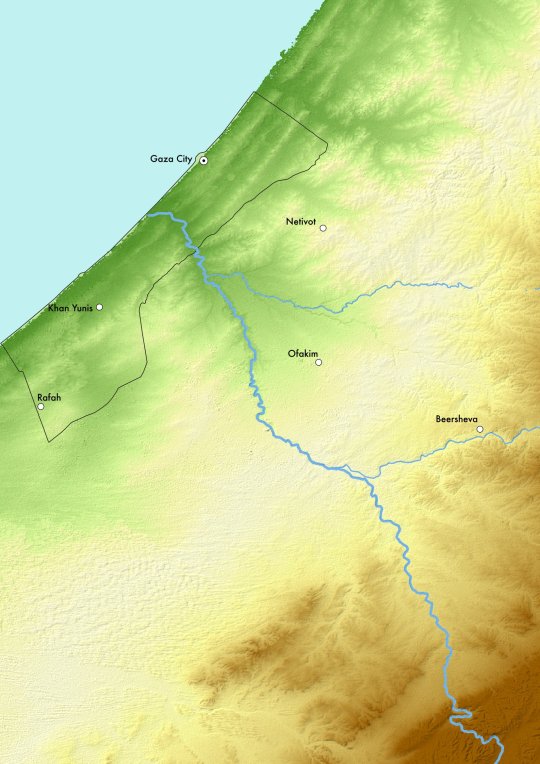
Wadi Gaza is a perennial stream in a country with very few of them. it's very small but occasionally subject to massive floods; the highly permeable coastal loess topsoil gives the coastal aquifer a relatively quick recharge time. photo shows the stream inside israel

so in theory there's no reason gaza should run short of water, even with 2.4 million people relying on it. well... this is what Wadi Gaza looks like inside the Gaza Strip. you may notice some differences.
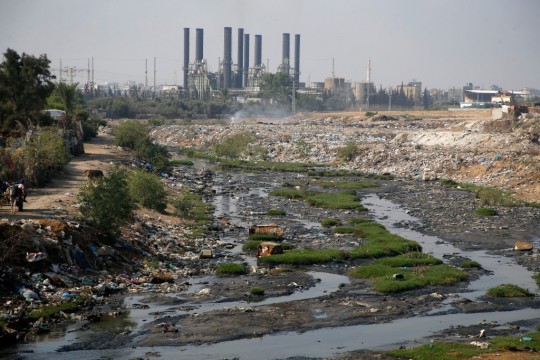
inside israel, i.e., upstream from gaza, huge amounts of water are pumped out of the aquifer in order to make all those kibbutzim and moshavim the highly productive agricultural communities that they are, and in order to sell the water to palestinians at a markup.
the river also naturally loses water through the riverbed, and this is not recharged, it doesn't have the flow rate inside gaza to carry pollutants out to sea. so they penetrate into the topsoil. where do all the pollutants come from? industrial and household wastewater.
gaza cannot import components to maintain its own water treatment plants, nor can it maintain its own energy supply, because israel restricts the importation of building materials, fuel, and other power sources (e.g. solar panels). so most wastewater goes untreated
as a result, wells are dug deeper, because the surface layers of water are contaminated. this causes horizontal subsidence, because gaza is adjacent to the sea, and saltwater infiltrates the water supply, making the water brackish. only about 5-10% of the wells in gaza are usable
can israel pump enough seawater into gaza's aquifer to render it completely undrinkable? yes, for as long as they keep the pumps going, and a few months afterwards. once they stop, fresh water flowing downhill from the israeli part of the aquifer will increase water pressure
salt water is denser than fresh water, so when fresh water flows into a brackish aquifer and water pressure increases, the salt water sinks deeper into the crust. in general, the artificial injection of desalinated water could restore gaza's water supply this way
if, of course, there were sufficient power to run all of gaza's desalination plants and water treatment plants, and if israel's water company stopped depleting the upstream aquifer (and, of course, if the risk of subsidence- and swelling-related earthquakes was mitigated)
IOW: the only reason this is a realistic plan for israel is bc they've spent the last 30-40 years already doing indirectly. even then, they'd need a lot more than five pumps. but the "permanence" of the effect is only true if the occupation and siege are also permanent
whereas, if the occupation and siege ended tomorrow, and even if 5 million people lived in Gaza, the area could regain not only its habitability but its famous and historic agricultural productivity within, at most, a couple of years.
end of thread
(Dec. 6)
818 notes
·
View notes
Text
Watch the left care more about the dogs the terrorists shot in their rampage than the countless of human lives that were slaughtered and burned and mutilated
#text#i've seen a video of a dog getting shot#i've heard zaka volunteers describing the dead dogs scattered in the streets of the kibbutzim#knowing the world.... they'll get mad over that than anything else#or the dead livestock!#''the poor cows... that's why we need to go vegan! poor innocent animals!''#just wait... they'll appear soon enough
4 notes
·
View notes
Text


[ID: First image shows large falafel balls, one pulled apart to show that it is bright green and red on the inside, on a plate alongside green chilis, parsley, and pickled turnips. Second image is an extreme close-up of the inside of a halved falafel ball drizzled with tahina sauce. End ID]
فلافل محشي فلسطيني / Falafel muhashshi falastini (Palestinian stuffed falafel)
Falafel (فَلَافِل) is of contested origin. Various hypotheses hold that it was invented in Egypt any time between the era of the Pharoahs and the late nineteenth century (when the first written references to it appear). In Egypt, it is known as طَعْمِيَّة (ṭa'miyya)—the diminutive of طَعَام "piece of food"—and is made with fava beans. It was probably in Palestine that the dish first came to be made entirely with chickpeas.
The etymology of the word "falafel" is also contested. It is perhaps from the plural of an earlier Arabic word *filfal, from Aramaic 𐡐𐡋𐡐𐡉𐡋 "pilpāl," "small round thing, peppercorn"; or from "مفلفل" "mfelfel," a word meaning "peppered," from "فلفل" "pepper" + participle prefix مُ "mu."
This recipe is for deep-fried chickpea falafel with an onion and sumac حَشْوَة (ḥashua), or filling; falafel are also sometimes stuffed with labna. The spice-, aromatic-, and herb-heavy batter includes additions common to Palestinian recipes—such as dill seeds and green onions—and produces falafel balls with moist, tender interiors and crisp exteriors. The sumac-onion filling is tart and smooth, and the nutty, rich, and bright tahina-based sauce lightens the dish and provides a play of textures.
Falafel with a filling is falafel مُحَشّي (muḥashshi or maḥshshi), from حَشَّى (ḥashshā) "to stuff, to fill." While plain falafel may be eaten alongside sauces, vegetables, and pickles as a meal or a snack, or eaten in flatbread wraps or kmaj bread, stuffed falafel are usually made larger and eaten on their own, not in a wrap or sandwich.
Falafel has gone through varying processes of adoption, recognition, nationalization, claiming, and re-patriation in Zionist settlers' writing. A general arc may be traced from adoption during the Mandate years, to nationalization and claiming in the years following the Nakba until the end of the 20th century, and back to re-Arabization in the 21st. However, settlers disagree with each other about the value and qualities of the dish within any given period.
What is consistent is that falafel maintains a strategic ambiguity: particular qualities thought to belong to "Arabs" may be assigned, revoked, rearranged, and reassigned to it (and to other foodstuffs and cultural products) at will, in accordance with broader trends in politics, economics, and culture, or in service of the particular argument that a settler (or foreign Zionist) wishes to make.
Mandate Palestine, 1920s – early '30s: Secular and collective
While most scholars hold that claims of an ancient origin for falafel are unfounded, it was certainly being eaten in Palestine by the 1920s. Yael Raviv writes that Jewish settlers of the second and third "עליות" ("aliyot," waves of immigration; singular "עליה" "aliya") tended to adopt falafel, and other Palestinian foodstuffs, largely uncritically. They viewed Palestinian Arabs as holding vessels that had preserved Biblical culture unchanged, and that could therefore serve as models for a "new," agriculturally rooted, physically active, masculine Jewry that would leave behind the supposed errors of "old" European Jewishness, including its culinary traditions—though of course the Arab diet would need to be "corrected" and "civilized" before it was wholly suitable for this purpose.
Falafel was further endeared to these "חֲלוּצִים" ("halutzim," "pioneers") by its status as a street food. The undesirable "old" European Jewishness was associated with the insularity of the nuclear family and the bourgeois laziness of indoor living. The קִבּוּצים ("Kibbutzim," communal living centers), though they represented only a small minority of settlers, furnished a constrasting ideal of modern, earthy Jewishness: they left food production to non-resident professional cooks, eliding the role of the private, domestic kitchen. Falafel slotted in well with these ascetic ideals: like the archetypal Arabic bread and olive oil eaten by the Jewish farmer in his field, it was hardy, cheap, quick, portable, and unconnected to the indoor kitchen.
The author of a 1929 article in דאר היום ("Doar Hyom," "Today's Mail") shows unrestrained admiration for the "[]מזרחי" ("Oriental") food, writing of his purchase of falafel stuffed in a "פיתה" ("pita") that:
רק בני-ערב, ואחיהם — היהודים הספרדים — רק הם עלולים "להכנת מטעם מפולפל" שכזה, הנעים כל כך לחיך [...].
("Only the Arabs, and their brothers—the Sepherdi Jews—only they are likely to create a delicacy so 'peppered' [a play on the פ-ל-פ-ל (f-l-f-l) word root], one so pleasing to the palate".)
Falafel's strong association with "Arabs" (i.e., Palestinians), however, did blemish the foodstuff in the eyes of some as early as 1930. An article in the English-language Palestine Bulletin told the story of Kamel Ibn Hassan's trial for the murder of a British soldier, lingering on the "Arab" "hashish addicts," "women of the streets," and "concessionaires" who rounded out this lurid glimpse into the "underground life lived by a certain section of Arab Haifa"; it was in this context that Kamel's "'business' of falafel" (scare quotes original) was mentioned.
Mandate Palestine, late 1930s–40s: A popular Oriental dish
In 1933, only three licensed falafel vendors operated in Tel Aviv; but by December 1939, Lilian Cornfeld (columnist for the English-language Palestine Post) could lament that "filafel cakes" were "proclaiming their odoriferous presence from every street corner," no longer "restricted to the seashore and Oriental sections" of the city.
Settlers' attitudes to falafel at this time continued to range from appreciation to fascinated disgust to ambivalence, and references continued to focus on its cheapness and quickness. According to Cornfeld, though the "orgy of summertime eating" of which falafel was the "most popular" representative caused some dietary "damage" to children, and though the "rather messy and dubious looking" food was deep-fried, the chickpeas themselves were still of "great nutritional value": "However much we may object to frying, — if fry you must, this at least is the proper way of doing it."
Cornfeld's article, appearing 10 years after the 1929 reference to falafel in pita quoted above, further specifies how this dish was constructed:
There is first half a pita (Arab loaf), slit open and filled with five filafels, a few fried chips [i.e. French fries] and sometimes even a little salad. The whole is smeared over with Tehina, a local mayonnaise made with sesame oil (emphasis original).
The ethnicity of these early vendors is not explicitly mentioned in these accounts. The Zionist "תוצרת הארץ" "totzeret ha’aretz"; "produce of the land") campaign in the 1930s and 1940s recommended buying only Jewish produce and using only Jewish labor, but it did not achieve unilaterial success, so it is not assured that settlers would not be buying from Palestinian vendors. There were, however, also Mizrahi Jewish vendors in Tel Aviv at this time.
The WW2-era "צֶנַע" ("tzena"; "frugality") period of rationing meat, which was enforced by British mandatory authorities beginning in 1939 and persisting until 1959, may also have contributed to the popularity of falafel during this time—though urban settlers employed various strategies to maintain access to significant amounts of meat.
Israel and elsewhere, 1950s – early 60s: The dawn of de-Arabization
After the Nakba (the ethnic cleansing of broad swathes of Palestine in the creation of the modern state of "Israel"), the task of producing a national Israeli identity and culture tied to the land, and of asserting that Palestinians had no like sense of national identity, acquired new urgency. The claiming of falafel as "the national snack of Israel," the decoupling of the dish from any association with "Arabs" (in settlers' writing of any time period, this means "Palestinians"), and the insistence on associating it with "Israel" and with "Jews," mark this time period in Israeli and U.S.-ian newspaper articles, travelogues, and cookbooks.
During this period, falafel remained popular despite the "reintegrat[ion]" of the nuclear family into the "national project," and the attendant increase in cooking within the familial home. It was still admirably quick, efficient, hardy, and frequently eaten outside. When it was homemade, the dish could be used rhetorically to marry older ideas about embodying a "new" Jewishness and a return to the land through dietary habits, with the recent return to the home kitchen. In 1952, Rachel Yanait Ben-Zvi, the wife of the second President of Israel, wrote to a South African Zionist women's society:
I prefer Oriental dishes and am inclined towards vegetarianism and naturalism, since we are returning to our homeland, going back to our origin, to our climate, our landscape and it is only natural that we liberate ourselves from many of the habits we acquired in the course of our wanderings in many countries, different from our own. [...]
Meals at the President's table [...] consist mainly of various kinds of vegetable prepared in the Oriental manner which we like as well as [...] home-made Falafel, and, of course vegetables and fruits of the season.
Out of doors, associations of falafel with low prices, with profusion and excess, and with youth, travelling and vacation (especially to urban locales and the seaside) continue. Falafel as part and parcel of Israeli locales is given new emphasis: a reference to the pervasive smell of frying falafel rounds out the description of a chaotic, crowded, clamorous scene in the compact, winding streets of any old city. Falafel increasingly stands metonymically for Israel, especially in articles written to entice Jewish tourists and settlers: no one is held to have visited Israel unless they have tried real Israeli falafel. A 1958 song ("ולנו יש פלאפל", "And We Have Falafel") avers that:
הַיּוֹם הוּא רַק יוֹרֵד מִן הַמָּטוֹס
[...] כְבָר קוֹנֶה פָלָאפֶל וְשׁוֹתֶה גָּזוֹז
כִּי זֶה הַמַּאֲכָל הַלְּאֻמִּי שֶׁל יִשְׂרָאֵל
("Today when [a Jew] gets off the plane [to Israel] he immediately has a falafel and drinks gazoz [...] because this is the national dish of Israel"). A 1962 story in Israel Today features a boy visiting Israel responding to the question "Have you learned Hebrew yet?" by asserting "I know what falafel is." Recipes for falafel appear alongside ads for smoked lox and gefilte fish in U.S.-ian Jewish magazines; falafel was served by Zionist student groups in U.S.-ian universities beginning in the 1950s and continuing to now.
These de-Arabization and nationalization processes were possible in part because it was often Mizrahim (West Asian and North African Jews) who introduced Israelis to Palestinian food—especially after 1950, when they began to immigrate to Israel in larger numbers. Even if unfamiliar with specific Palestinian dishes, Mizrahim were at least familiar with many of the ingredients, taste profiles, and cooking methods involved in preparing them. They were also more willing to maintain their familiar foodways as settlers than were Zionist Ashkenazim, who often wanted to distance themselves from European and diaspora Jewish culture.
Despite their longstanding segregation from Israeli Ashkenazim (and the desire of Ashkenazim to create a "new" European Judaism separate from the indolence and ignorance of "Oriental" Jews, including their wayward foodways), Mizrahim were still preferable to Palestinian Arabs as a point of origin for Israel's "national snack." When associated with Mizrahi vendors, falafel could be considered both Oriental and Jewish (note that Sephardim and Mizrahim are unilaterally not considered to be "Arabs" in this writing).
Thus food writing of the 1950s and 60s (and some food writing today) asserts, contrary to settlers' writing of the 1920s and 30s, that falafel had been introduced to Israel by Jewish immigrants from Syria, Yemen, or Morocco, who had been used to eating it in their native countries—this, despite the fact that Yemen and Morocco did not at this time have falafel dishes. Even texts critical of Zionism echoed this narrative. In fact, however, Yemeni vendors had learned to make falafel in Egypt on their way to Palestine and Israel, and probably found falafel already being sold and eaten there when they arrived.Meneley, Anne2007 Like an Extra Virgin. American Anthropologist 109(4):678–687
Meanwhile, "pita" (Palestinian Arabic: خبز الكماج; khubbiz al-kmaj) was undergoing in some quarters a similar process of Israelization; it remained "Arab" in others. In 1956, a Boston-born settler in Haifa wrote for The Jewish Post:
The baking of the pittah loaves is still an Arab monopoly [in Israel], and the food is not available at groceries or bakeries which serve Jewish clientele exclusively. For our Oriental meal to be a success we must have pittah, so the more advance shopping must be done.
This "Arab monopoly" in fact did not extent to an Arab monopoly in discourse: it was a mere four years later that the National Jewish Post and Opinion described "Peeta" as an "Israeli thin bread." Two years after that, the U.S.-published My Jewish Kitchen: The Momales Ta'am Cookbook (co-authored by Zionist writer Shushannah Spector) defined "pitta" as an "Israeli roll."
Despite all this scrubbing work, settlers' attitudes towards falafel in the late 1950s were not wholly positive, and references to the dish as having been "appropriated from the [Palestinian] Arabs" did not disappear. A 1958 article, written by a Boston-born man who had settled in Israel in 1948 and published in U.S.-ian Zionist magazine Midstream, repeats the usual associations of falafel with the "younger set" of visitors from kibbutzim to "urban" locales; it also denigrates it as a “formidably indigestible Arab delicacy concocted from highly spiced legumes rolled into little balls, fried in grease, and then inserted into an underbaked piece of dough, known as a pita.”
Thus settlers were ambivalent about khubbiz as well. If their food writing sometimes refers to pita as "doughy" or "underbaked," it is perhaps because they were purchasing it from stores rather than baking it at home—bakeries sometimes underbake their khubbiz so that it retains more water, since it is sold by weight.
Israel and elsewhere, late 1960s–2010s: Falafel with even fewer Arabs
The sanitization of falafel would be more complete in the 60s and 70s, as falafel was gradually moved out of separate "Oriental dishes" categories and into the main sections of Israeli cookbooks. A widespread return to כַּשְׁרוּת (kashrut; dietary laws) meant that falafel, a פַּרְוֶה (parve) dish—one that contained no meat or dairy—was a convenient addition on occasions when food intersected with nationalist institutions, such as at state dinners and in the mess halls of Israeli military forces.
This, however, still did not prohibit Israelis from displaying ambivalence towards the food. Falafel was more likely to be glorified as a symbol of Jewish Israel in foreign magazines and tourist guides, including in the U.S.A. and Italy, than it was to be praised in Israeli Zionist publications.
Where falafel did maintain an association with Palestinians, it was to assert that their versions of it had been inferior. In 1969, Israeli writer Ruth Bondy opines:
Experience says that if we are to form an affection for a people we should find something admirable about its customs and folklore, its food or girls, its poetry and music. True, we have taken the first steps in this direction [with Palestinians]: we like kebab, hummous, tehina and falafel. The trouble is that these have already become Jewish dishes and are prepared more tastily by every Rumanian restaurateur than by the natives of Nablus.
Opinions about falafel in this case seem to serve as a mirror for political opinions about Palestinians: the same writer had asserted, on the previous page, that the "ideal situation, of course, would be to keep all the territories we are holding today—but without so many Arabs. A few Arabs would even be desirable, for reasons of local color, raising pigs for non-Moslems and serving bread on the Passover, but not in their masses" (trans. Israel L. Taslitt).
Later narratives tended to retrench the Israelization of falafel, often acknowledging that falafel had existed in Palestine prior to Zionist incursion, but holding that Jewish settlers had made significant changes to its preparation that were ultimately responsible for making it into a worldwide favorite. Joan Nathan's 2001 Foods of Israel Today, for example, claimed that, while fava and chickpea falafel had both preëxisted the British Mandate period, Mizrahi settlers caused chickpeas to be the only pulse used in falafel.
Gil Marks, who had echoed this narrative in his 2010 Encyclopedia of Jewish Food, later attributed the success of Palestinian foods to settlers' inventiveness: "Jews didn’t invent falafel. They didn’t invent hummus. They didn’t invent pita. But what they did invent was the sandwich. Putting it all together. And somehow that took off and now I have three hummus restaurants near my house on the Upper West Side.”
Israel and elsewhere, 2000s – 2020s: Re-Arabization; or, "Local color"
Ronald Ranta has identified a trend of "re-Arabizing" Palestinian food in Israeli discourse of the late 2000s and later: cooks, authors, and brands acknowledge a food's origin or identity as "Arab," or occasionally even "Palestinian," and consumers assert that Palestinian and Israeli-Palestinian (i.e., Israeli citizens of Palestinian ancestry) preparations of foods are superior to, or more "authentic" than, Jewish-Israeli ones. Israeli and Israeli-Palestinian brands and restaurants market various foods, including falafel, as "אסלי" ("asli"), from the Arabic "أَصْلِيّ" ("ʔaṣliyy"; "original"), or "בלדי" ("baladi"), from the Arabic "بَلَدِيّ" ("baladiyy"; "native" or "my land").
This dedication to multiculturalism may seem like progress, but Ranta cautions that it can also be analyzed as a new strategy in a consistent pattern of marginalization of the indigenous population: "the Arab-Palestinian other is re-colonized and re-imagined only as a resource for tasty food [...] which has been de-politicized[;] whatever is useful and tasty is consumed, adapted and appropriated, while the rest of its culture is marginalized and discarded." This is the "serving bread" and "local color" described by Bondy: "Arabs" are thought of in terms of their usefulness to settlers, and not as equal political participants in the nation. For Ranta, the "re-Arabizing" of Palestinian food thus marks a new era in Israel's "confiden[ce]" in its dominance over the indigenous population.
So this repatriation of Palestinian food is limited insofar as it does not extend to an acknowledgement of Palestinians' political aspirations, or a rejection of the Zionist state. Food, like other indicators and aspects of culture, is a "safe" avenue for engagement with colonized populations even when politics is not.
The acknowledgement of Palestinian identity as an attempt to neutralize political dissent, or perhaps to resolve the contradictions inherent in liberal Zionist identity, can also be seen in scholarship about Israeli food culture. This scholarship tends to focus on narratives about food in the cultural domain, ignoring the material impacts of the settler-colonialist state's control over the production and distribution of food (something that Ranta does as well). Food is said to "cross[] borders" and "transcend[] cultural barriers" without examination of who put the borders there (or where, or why, or how, or when). Disinterest in material realities is cultivated so that anodyne narratives about food as “a bridge” between divides can be pursued.
Raviv, for example, acknowledges that falafel's de-Palestinianization was inspired by anti-Arab sentiment, and that claiming falafel in support of "Jewish nationalism" was a result of "a connection between the people and a common land and history [needing] to be created artificially"; however, after referring euphemistically to the "accelerated" circumstances of Israel's creation, she supports a shared identity for falafel in which it can also be recognized as "Israeli." She concludes that this should not pose a problem for Palestinians, since "falafel was never produced through the labor of a colonized population, nor was Palestinian land appropriated for the purpose of growing chickpeas for its preparation. Thus, falafel is not a tool of oppression."
Palestine and Israel, 1960s – 2020s: Material realities
Yet chickpeas have been grown in Israel for decades, all of them necessarily on appropriated Palestinian land. Experimentation with planting in the arid conditions of the south continues, with the result that today, chickpea is the major pulse crop in the country. An estimated 17,670,000 kilograms of chickpeas were produced in Israel in 2021; at that time, this figure had increased by an average of 3.5% each year since 1966. 73,110 kilograms of that 2021 crop was exported (this even after several years of consecutive decline in chickpea exports following a peak in 2018), representing $945,000 in exports of dried chickpeas alone.
The majority of these chickpeas ($872,000) were exported to the West Bank and Gaza; Palestinians' inability to control their own imports (all of which must pass through Israeli customs, and which are heavily taxed or else completely denied entry), and Israeli settler violence and government expropriation of land, water, and electricity resources (which make agriculture difficult), mean that Palestine functions as a captive market for Israeli exports. Israeli goods are the only ones that enter Palestinian markets freely.
By contrast, Palestinian exports, as well as imports, are subject to taxation by Israel, and only a small minority of imports to Israel come from Palestine ($1.13 million out of $22.4 million of dried chickpeas in 2021).
The 1967 occupation of the West Bank has besides had a demonstrable impact on Palestinians' ability to grow chickpeas for domestic consumption or export in the first place, as data on the changing uses of agricultural land in the area from 1966–2001 allow us to see. Chickpeas, along with wheat, barley, fenugreek, and dura, made up a major part of farmers' crops from 1840 to 1914; but by 2001, the combined area devoted to these field crops was only a third of its 1966 value. The total area given over to chickpeas, lentils and vetch, in particular, shrank from 14,380 hectares in 1966 to 3,950 hectares in 1983.
Part of this decrease in production was due to a shortage of agricultural labor, as Palestinians, newly deprived of land or of the necessary water, capital, and resources to work it—and in defiance of Raviv's assertion that "falafel was never produced through the labor of a colonized population"—sought jobs as day laborers on Israeli fields.
The dearth of water was perhaps especially limiting. Palestinians may not build anything without a permit, which the Israeli military may deny for any, or for no, reason: no Palestinian's request for a permit to dig a well has been approved in the West Bank since 1967. Israel drains aquifiers for its own use and forbids Palestinians to gather rainwater, which the Israeli military claims to own. This lack of water led to land which had previously been used to grow other crops being transitioned into olive tree fields, which do not require as much water or labor to tend.
In Gaza as well, occupation systematically denies Palestinians of food itself, not just narratives about food. The majority of the population in Gaza is food-insecure, as Israel allows only precisely determined (and scant) amounts of food to cross its borders. Gazans rely largely on canned goods, such as chickpeas (often purchased at subsidized rates through food aid programs run by international NGOs), because they do not require scarce water or fuel to prepare—but canned chickpeas cannot be used to prepare a typical deep-fried falafel recipe (the discs would fall apart while frying). There is, besides, a continual shortage of oil (of which only a pre-determined amount of calories are allowed to enter the Strip). Any narrative about Israeli food culture that does not take these and other realities of settler-colonialism into account is less than half complete.
Of course, falafel is far from the only food impacted by this long campaign of starvation, and the strategy is only intensifying: as of December 2023, children are reported to have died by starvation in the besieged Gaza Strip.
Support Palestinian resistance by calling Elbit System’s (Israel’s primary weapons manufacturer) landlord; donating to Palestine Action’s bail fund; buying an e-sim for distribution in Gaza; or donating to help a family leave Gaza.
Equipment:
A meat grinder, or a food processor, or a high-speed or immersion blender, or a mortar and pestle and an enormous store of patience
A pot, for frying
A kitchen thermometer (optional)
Ingredients:
Makes 12 large falafel balls; serves 4 (if eaten on their own).
For the فلافل (falafel):
500g dried chickpeas (1010g once soaked)
1 large onion
4 cloves garlic
1 Tbsp cumin seeds
1 Tbsp coriander seeds
2 tsp dill seeds (عين جرادة; optional)
1 medium green chili pepper (such as a jalapeño), or 1/2 large one (such as a ram's horn / فلفل قرن الغزال)
2 stalks green onion (3 if the stalks are thin) (optional)
Large bunch (50g) parsley, stems on; or half parsley and half cilantro
2 Tbsp sea salt
2 tsp baking soda (optional)
For the حَشوة (filling):
2 large yellow onions, diced
1/4 cup coarsely ground sumac
4 tsp shatta (شطة: red chili paste), optional
Salt, to taste
3 Tbsp olive oil
For the طراطور (tarator):
3 cloves garlic
1/2 tsp table salt
1/4 cup white tahina
Juice of half a lemon (2 Tbsp)
2 Tbsp vegan yoghurt (لبن رائب; optional)
About 1/4 cup water
To make cultured vegan yoghurt, follow my labna recipe with 1 cup, instead of 3/4 cup, of water; skip the straining step.
To fry:
Several cups neutral oil
Untoasted hulled sesame seeds (optional)
Instructions:
1. If using whole spices, lightly toast in a dry skillet over medium heat, then grind with a mortar and pestle or spice mill.
2. Grind chickpeas, onion, garlic, chili, and herbs. Modern Palestinian recipes tend to use powered meat grinders; you could also use a food processor, speed blender, or immersion blender. Some recipes set aside some of the chickpeas, aromatics, and herbs and mince them finely, passing the knife over them several times, then mixing them in with the ground mixture to give the final product some texture. Consult your own preferences.
To mimic the stone-ground texture of traditional falafel, I used a mortar and pestle. I found this to produce a tender, creamy, moist texture on the inside, with the expected crunchy exterior. It took me about two hours to grind a half-batch of this recipe this way, so I don't per se recommend it, but know that it is possible if you don't have any powered tools.
3. Mix in salt, spices, and baking soda and stir thoroughly to combine. Allow to chill in the fridge while you prepare the filling and sauce.
If you do not plan to fry all of the batter right away, only add baking soda to the portion that you will fry immediately. Refrigerate the rest of the batter for up to 2 days, or freeze it for up to 2 months. Add and incorporate baking soda immediately before frying. Frozen batter will need to be thawed before shaping and frying.
For the filling:
1. Heat olive oil in a skillet over medium heat. Fry onion and a pinch of salt for several minutes, until translucent. Remove from heat.
2. Add sumac and stir to combine. Add shatta, if desired, and stir.
For the tarator:
1. Grind garlic and salt in a mortar and pestle (if you don't have one, finely mince and then crush the garlic with the flat of your knife).
2. Add garlic to a bowl along with tahina and whisk. You will notice the mixture growing smoother and thicker as the garlic works as an emulsifier.
3. Gradually add lemon juice and continue whisking until smooth. Add yoghurt, if desired, and whisk again.
4. Add water slowly while whisking until desired consistency is achieved. Taste and adjust salt.
To fry:
1. Heat several inches of oil in a small or medium pot to about 350 °F (175 °C). A piece of batter dropped in the oil should float and immediately form bubbles, but should not sizzle violently. (With a small pot on my gas stove, my heat was at medium-low).
2. Use your hands or a large falafel mold to shape the falafel.
To use a falafel mold: Dip your mold into water. If you choose to cover both sides of the falafel with sesame seeds, first sprinkle sesame seeds into the mold; then apply a flat layer of batter. Add a spoonful of filling into the center, and then cover it with a heaping mound of batter. Using a spoon, scrape from the center to the edge of the mold repeatedly, while rotating the mold, to shape the falafel into a disc with a slightly rounded top. Sprinkle the top with sesame seeds.
To use your hands: wet your hands slightly and take up a small handful of batter. Shape it into a slightly flattened sphere in your palm and form an indentation in the center; fill the indentation with filling. Cover it with more batter, then gently squeeze between both hands to shape. Sprinkle with sesame seeds as desired.
3. Use a slotted spoon or kitchen spider to lower falafel balls into the oil as they are formed. Fry, flipping as necessary, until discs are a uniform brown (keep in mind that they will darken another shade once removed from the oil). Remove onto a wire rack or paper towel.
If the pot you are using is inclined to stick, be sure to scrape the bottom and agitate each falafel disc a couple seconds after dropping it in.
4. Repeat until you run out of batter. Occasionally use a slotted spoon or small sieve to remove any excess sesame seeds from the oil so they do not burn and become acrid.
Serve immediately with sauce, sliced vegetables, and pickles, as desired.


#Palestine#Israel#vegetarian recipes#Palestinian#falafel#chickpeas#sumac#onions#garlic#parsley#cilantro#dill seeds#sesame seeds#tahina#yoghurt#long post /
781 notes
·
View notes
Text
Alright I'll bite. I live in Israel, yes. I served in the army, yeah. Does Israel mistreat Palestinians in Gaza and the West Bank? Absolutely. My friends who are still enlisted tell me about the shit show that goes in there every day. I get it, there are a million reasons to hate the government and the IDF and whoever else you point fingers to. No side is innocent.
But assholes on motorcycles and in pickup trucks broke through the fence, entered civilian towns and military outposts alike, and just started MASACARING EVERYONE. THIS SHIT IS UNPRECEDENTED. And some MIGHT tiptoe around the point, and say that taking over outposts is fair because it's an occupation force and colonialism and what have you, but for fucks sake
They entered civilian homes. They shot everyone who moved. In locked houses, they set the home on fire and shot the families as they fled. I heard the phone calls - people screaming and begging for their lives as terrorists are walking around their home, stealing possessions, massacring everyone.
They didn't just murder colonialists, militants, occupying forces. They murdered kids who should've gone to school today. Parents working local agriculture, teachers, normal guys with an office job. They murdered dozens of elderly people who couldn't run away.
Not only murdered. Kidnapped. Living and dead, put on pickup trucks and herded back to Gaza. Stripped naked, desecrated and paraded around Gaza. I dare you to tell me the party goers, who were at a rave near one of the Kibbutzim near the fence, deserved to be shot at as they ran to safety. Hundreds of people missing. My Instagram stories filled with their faces, and a phone number attached - "help us find our loved ones. Contact lost. If anyone knows anything-" and at this point I skip them because there's nothing I can do.
My friends are enlisted down there. We're just a bunch of 20 year olds. My best friend is defending one of the villages who were infiltrated, she's trading shots with gunmen who already murdered half the place, she's messaging me once in a while to let me know she's alive. She should've been home for the weekend, we were supposed to watch Chicago now that it's on Netflix. Now neither of us sleeps, she's putting her life on the line and I'm wide awake terrified of the moment they call me and tell me she's gone.
This is mostly a rant. If you read all of it, thanks. I live up north, no need to worry for my safety for now. I don't have a good ending for this. Just, stay safe, I guess.
955 notes
·
View notes
Text
To the girl who stands with "Freedom Fighters"
On Friday, pro-Hamas groups on my campus started an encampment. I, along with a few Chabad peers, decided to stick around to keep an eye on things and be aware of the situation.
In that time, a non-Muslim, non-Arab, non-Palestinian girl approached us, and in the conversation when Hamas were brought up, she said she "stands with freedom fighters".
So this is to the girl who stared me right in the face and said she stands with "freedom fighters".
"Freedom fighters" don't cut off a woman's breast and toss it around like a plaything. "Freedom fighters" don't steal babies from their homes and keep them in dark tunnels for months on end. "Freedom fighters" don't take women hostage to hold them at gunpoint and command them to perform sexual acts. "Freedom fighters" don't gang rape civilians attending a music festival for peace, recording the whole thing with pride. "Freedom fighters" don't parade the naked bodies of their victims along the streets and pass out candy in celebration.
Maybe for you, girl who stands with "freedom fighters", this war is just some fandom to follow. You bought your cheap keffiyeh on Amazon and decided you're a revolutionary. Decided to set up camp illegally on campus and deemed yourself a rebel.
But did you stare at your screen in shock as your heart and hope and trust shattered into twelve hundred bloody pieces, trampled in the dirt? Did you frantically text friends to make sure they were home and safe and alive? Did your hands shake as you realized what was being done to your brothers and sisters?
Did you ever stare at a "missing" poster and miss people you've never met, because they're family all the same? Did you stare at graffiti scratched on a baby's face on the walls of your school's Chabad and realize that this is how little your lives and theirs mean to your peers?
Have you ever read the news and seen a Jewish brother murdered in your home city? Felt your heart drop to see another brother dead, so far from the war and yet somehow never far enough?
No, you haven't. Because you think you're such a rebellious revolutionary, standing in front of me in your keffiyeh, supporting your "freedom fighters".
Because you never had to hear your mother say she used to live on one of the kibbutzim that were attacked and realized that this could have been your future.
Because you have never had to look in the eyes of someone who has lost friends and family to your "freedom fighters" and struggled to find what to say to offer even a shred of comfort.
To you, this war is a trend. A fandom. A quirky little phase.
To so many others, it's a fucking nightmare come to life.
#jumblr#proud israeli#israel solidarity#antisemitism#hamas aren't freedom fighters they're monsters#this war is a reality not a trend#am yisrael chai#i was possessed by some deep rage at like two or three at night and wrote a draft of this#antizionism is antisemitism
384 notes
·
View notes